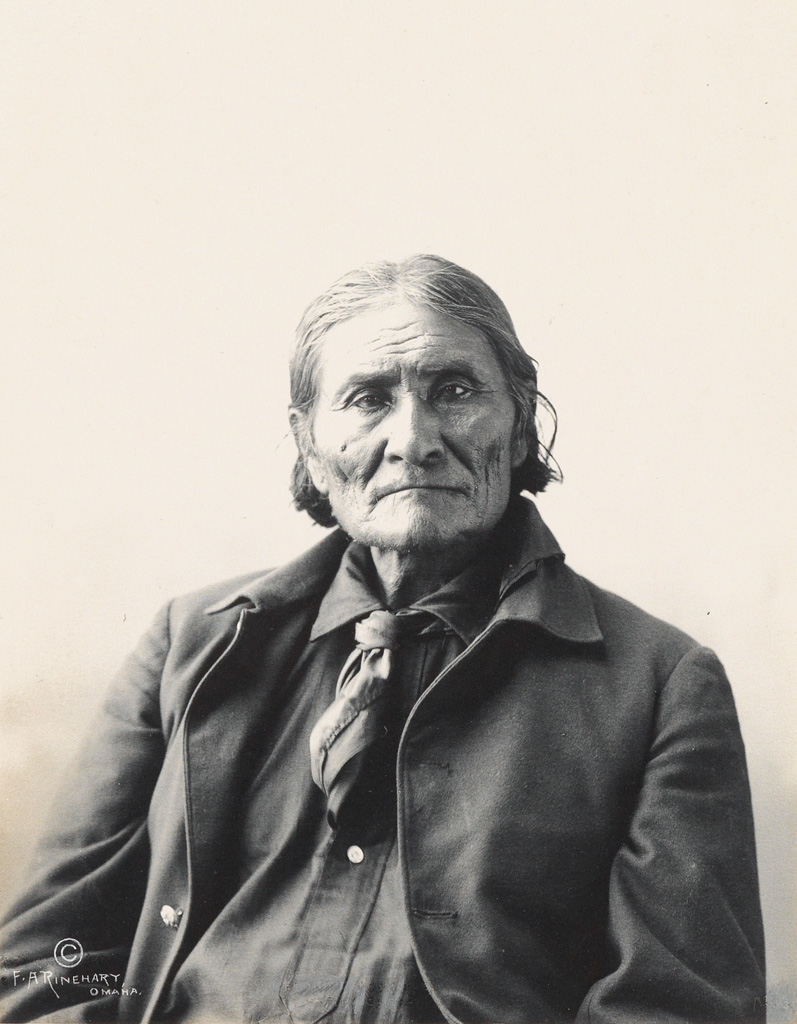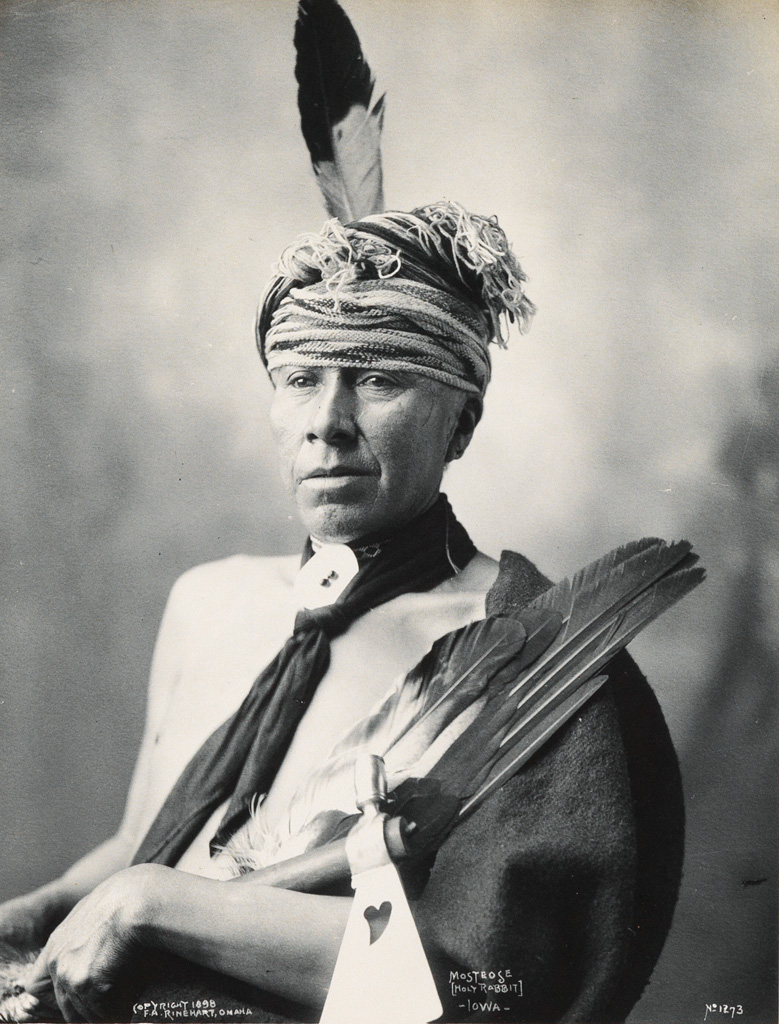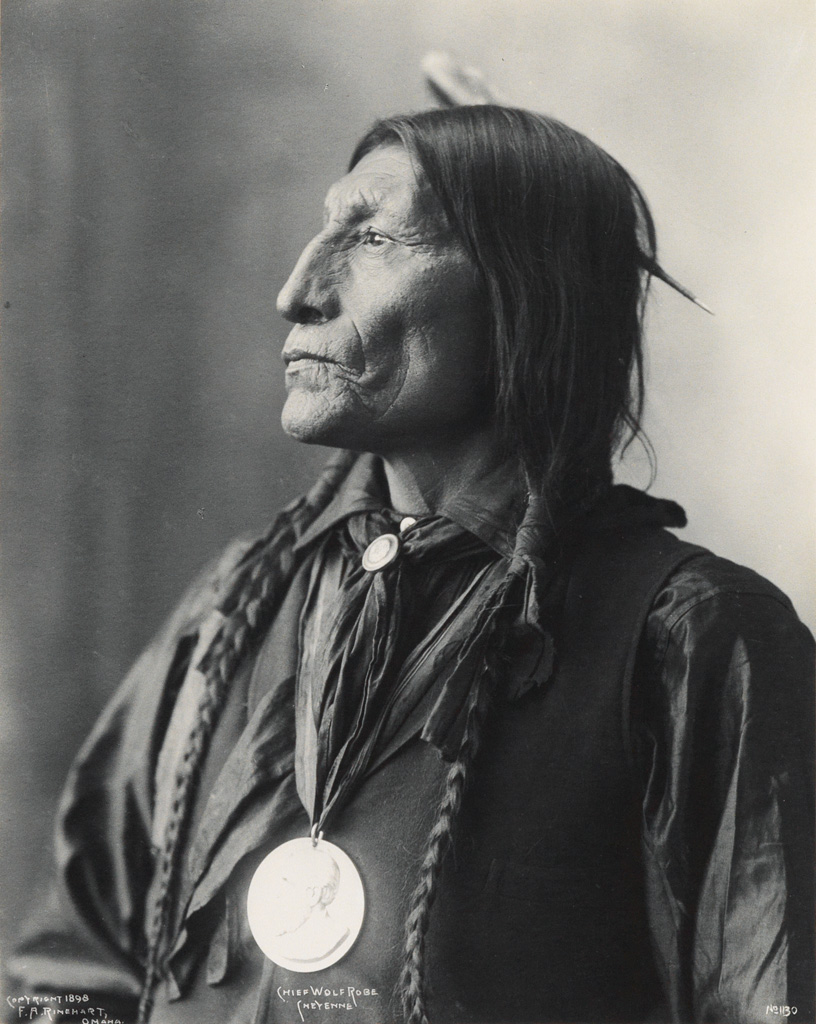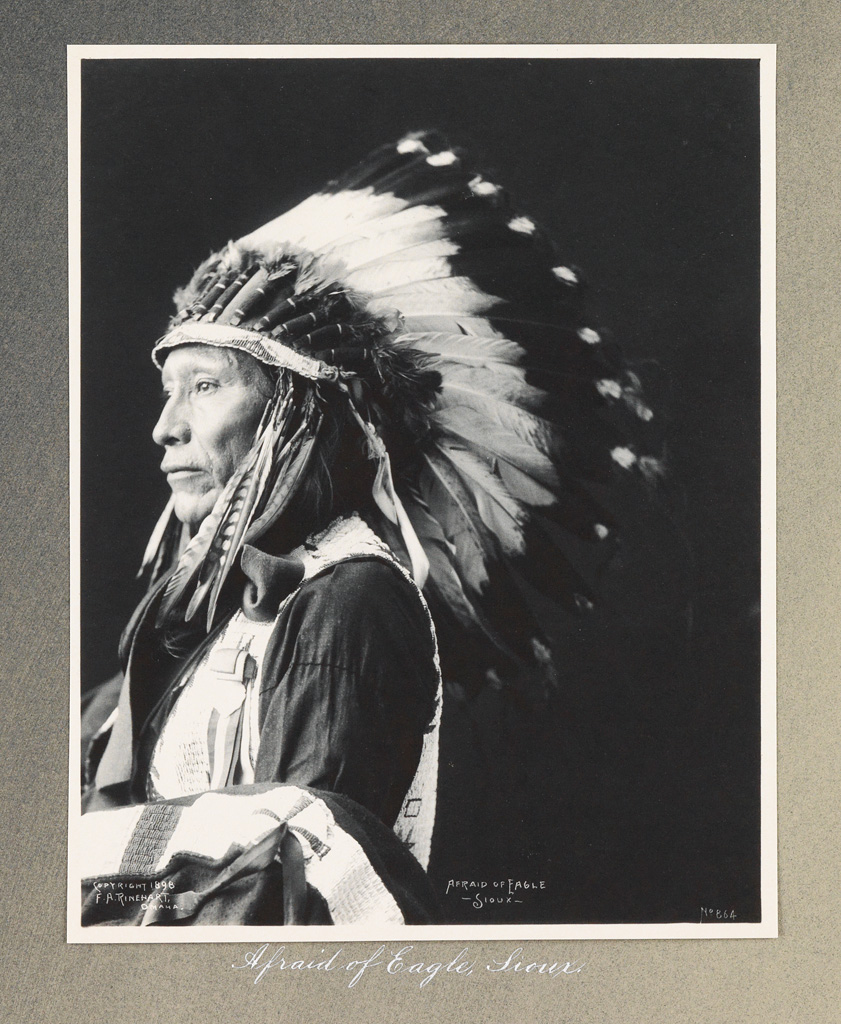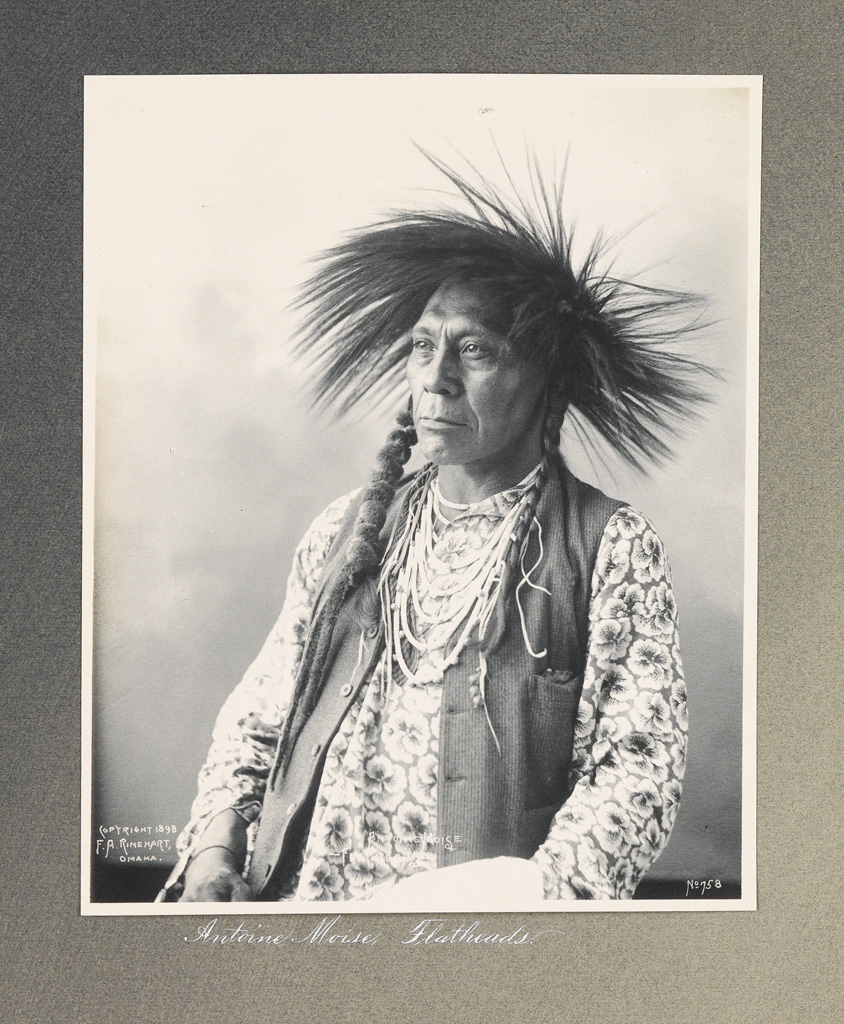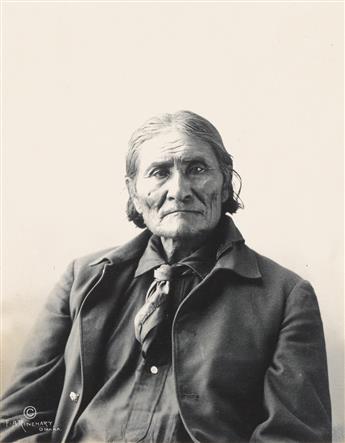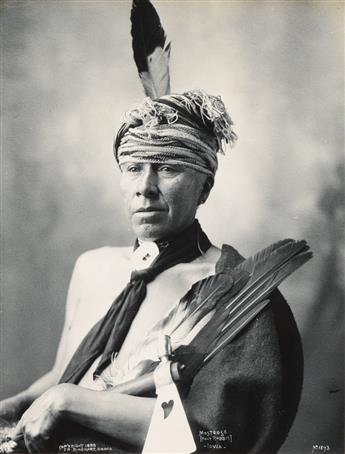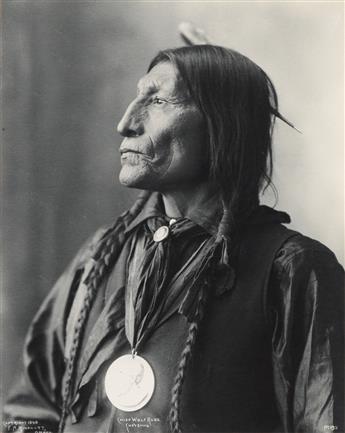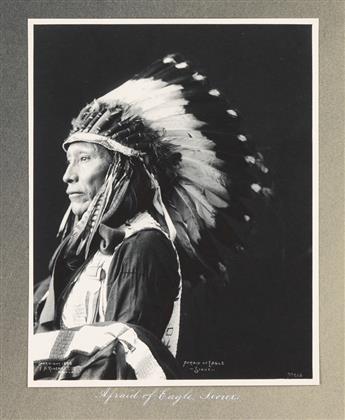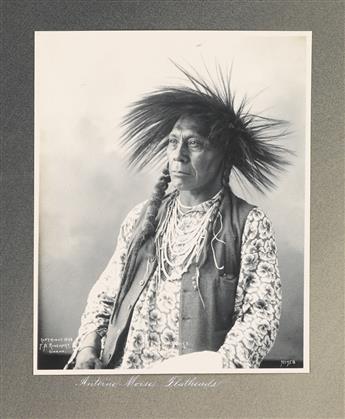Sale 2385 - Lot 42
Price Realized: $ 55,000
Price Realized: $ 71,500
?Final Price Realized includes Buyer’s Premium added to Hammer Price
Estimate: $ 30,000 - $ 45,000
RINEHART, FRANK A. (1861-1928)
A remarkable set of 50 platinum prints from the Trans-Mississippi and International Exposition, most featuring portraits of the leaders and members of the Native American delegations that attended the Exposition, including Geronimo; some depicting outdoor scenes of the gathering, as well as a couple of studies of children. Platinum prints, each measuring approximately 9 1/4x7 1/4 inches (23.5x18.4 cm.), and the reverse, tipped to gray card mounts, each with Rinehart's credit and copyright, the subject's name or the caption, and the negative number, in the negative, and with the subject's name again, in white ink, on mount recto. Small folio-sized gilt-lettered leather covers with ties, split; the front cover with a mounted letter presenting the album to Gurdon W. Wattles on behalf of the exhibition's Board of Directors. 1898
A remarkable set of 50 platinum prints from the Trans-Mississippi and International Exposition, most featuring portraits of the leaders and members of the Native American delegations that attended the Exposition, including Geronimo; some depicting outdoor scenes of the gathering, as well as a couple of studies of children. Platinum prints, each measuring approximately 9 1/4x7 1/4 inches (23.5x18.4 cm.), and the reverse, tipped to gray card mounts, each with Rinehart's credit and copyright, the subject's name or the caption, and the negative number, in the negative, and with the subject's name again, in white ink, on mount recto. Small folio-sized gilt-lettered leather covers with ties, split; the front cover with a mounted letter presenting the album to Gurdon W. Wattles on behalf of the exhibition's Board of Directors. 1898
Additional Details
From Gurdon Wallace Wattles, the the organizer and chairman of the Trans-Mississippi and International Exposition and Indian Congress; by descent, to the present owner.
Gurdon Wallace Wattles was a highly successful businessman, civic leader, and banker in Omaha, Nebraska. In his Autobiography, he wrote, "The Trans-Mississippi and International Exposition was not large in comparison with others, but for harmony in arrangement, artistic design, and comprehensive completeness in every detail it was a gem of rare beauty which brought words of appreciation and praise from every visitor."
Specializing in commercial portraits, Rinehart opened a studio in Omaha, Nebraska in 1886. In 1898 he became the official photographer of the Trans-Mississippi and International Exposition in Omaha. Rinehart's sensitively-composed photographs of the major leaders of Native American tribes are finely detailed while also emitting bold strength and individuality. The lush platinum printing gives each of the prints a sense of depth and richness.
This never-before-seen set presents a rare and possibly unique opportunity to understand Rinehart's distinct and important body of work as an significant visual document of Native American culture transitioning into the twentieth century.
Gurdon Wallace Wattles was a highly successful businessman, civic leader, and banker in Omaha, Nebraska. In his Autobiography, he wrote, "The Trans-Mississippi and International Exposition was not large in comparison with others, but for harmony in arrangement, artistic design, and comprehensive completeness in every detail it was a gem of rare beauty which brought words of appreciation and praise from every visitor."
Specializing in commercial portraits, Rinehart opened a studio in Omaha, Nebraska in 1886. In 1898 he became the official photographer of the Trans-Mississippi and International Exposition in Omaha. Rinehart's sensitively-composed photographs of the major leaders of Native American tribes are finely detailed while also emitting bold strength and individuality. The lush platinum printing gives each of the prints a sense of depth and richness.
This never-before-seen set presents a rare and possibly unique opportunity to understand Rinehart's distinct and important body of work as an significant visual document of Native American culture transitioning into the twentieth century.
Exhibition Hours
Exhibition Hours
Aliquam vulputate ornare congue. Vestibulum maximus, libero in placerat faucibus, risus nisl molestie massa, ut maximus metus lectus vel lorem.



